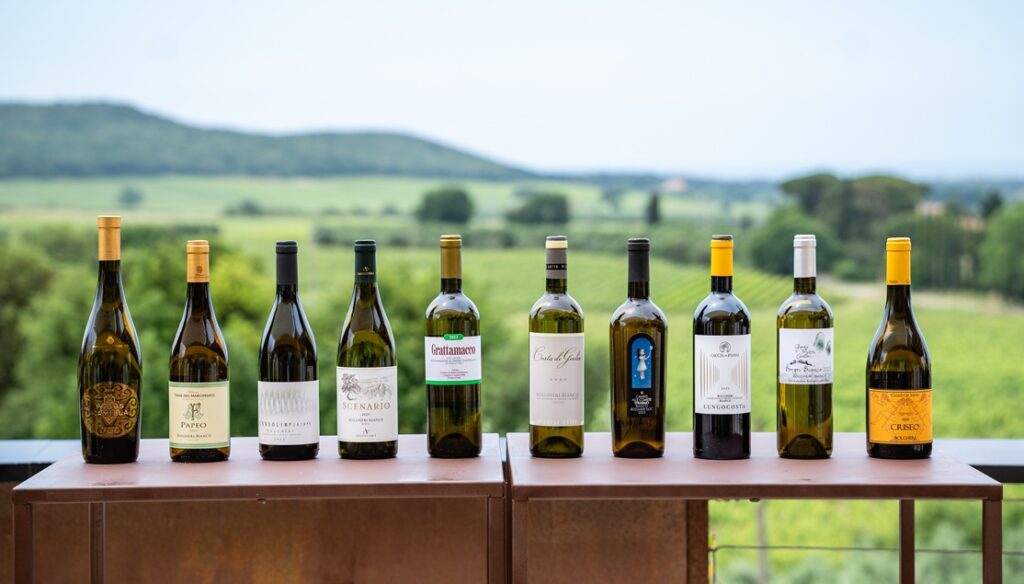A few days ago there was the premiere of a small local event, dedicated to restaurateurs, to promote the white wine of Bolgheri, called BiancoBolgheri. It involved the companies of the territory, ten to be exact, those who have decided to propose in their production range a Bianco Bolgheri DOC or Vermentino Bolgheri DOC wine. The idea is to repeat over the years this moment of reflection on the whites of the territory, moving each time to a different winery. Now, we were in the winery of Michele Satta Estate.
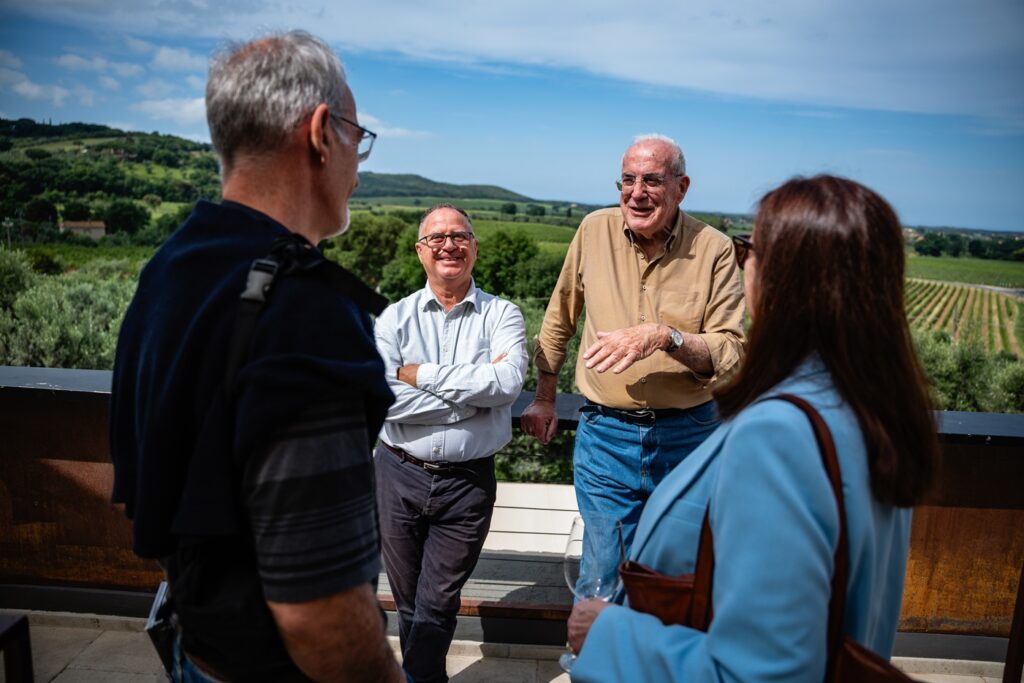
Why talk about white wine in Bolgheri, the land par excellence of great red wines? Those who know us already know the answer. It’s all in our Criseo Bolgheri DOC Bianco and its history, of which we presented at the tasting the current 2022 vintage, a preview of 2023 and, icing on the cake, a tasting of a fantastic old vintage, 2010.
The explanation for the uniqueness of white in Bolgheri is also found in our Genius Loci (or terroir if you prefer), highlighted by viticultural zoning studies. Bolgheri has such conditions that make it particularly suitable for viticulture, both for the production of remarkable red wines and elegant, fragrant whites. In fact, although it is a Mediterranean area, we have a mild climate with excellent light and considerable ventilation, with the lowest average annual temperatures on the Tuscan coast. In particular, there is a considerable temperature range between day and night during the grape ripening period (especially August and September). Finally, it has predominantly sandy soils of alluvial origin or due to wind deposits, which are deep and well drained. All these characteristics mean that the wines are powerfull, that is always counterbalanced by finesse, good freshness and considerable aromatic complexity. Our vineyards are the Tuscan ones closest to the sea, so they suffer abundantly from the benefits of this position, which makes the climate very stable, well-ventilated and rarely too hot. What this means, that difficult vintages are rare and that phytosanitary risks are generally very contained. It also means, in general, that there are all prerequisites for the production of great white wines.
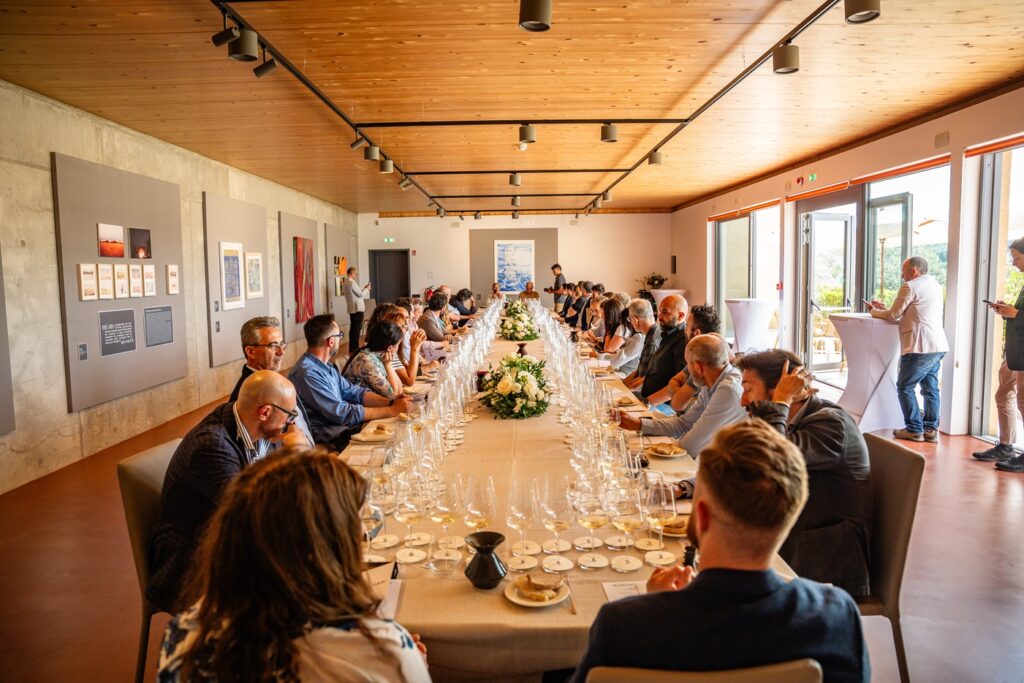
The production of white wine in Bolgheri however is not a novelty but a rediscovery. Given the optimal predisposition of the territory, it is a type of wine that has always been produced in the past. We have lists of the varieties present in the territory in the nineteenth century, including our vineyards, and several white varieties are part of it. The most important are Vermentino, Trebbiano toscano, Canaiolo bianco, Malvasia bianca and others. A large production is documented in the early twentieth century. Particularly for Guado al Melo, an important part of our vineyards was dedicated to them.
If you have read my accounts of the history of the area, you will know that unfortunately the great production of these periods was cut short by phylloxera, which struck our area especially in the 1920s. From then on there was a considerable decrease in vineyards in the area, replaced first by olive growing and then, to a lesser extent, by horticulture (from the 1950s). After World War II, vine-wine production began to rise again, first timidly and then more intensively from the 1980s onward. Already in the 1960s-1970s white wine had regained share in Bolgheri, to the point that the territory’s first DOC (1983) included Bolgheri Bianco wine. The varieties allowed were mainly Vermentino and Tuscan Trebbiano. That was still, however, a phase of transition and change on an area that, after the phylloxera blockade and deep local socio-economic transformations, had yet to find its definitive conformation. Moreover, this area also long suffered from a prejudice ingrained at the time in Tuscany, now largely disproved, namely that great wines could not be born near the sea.
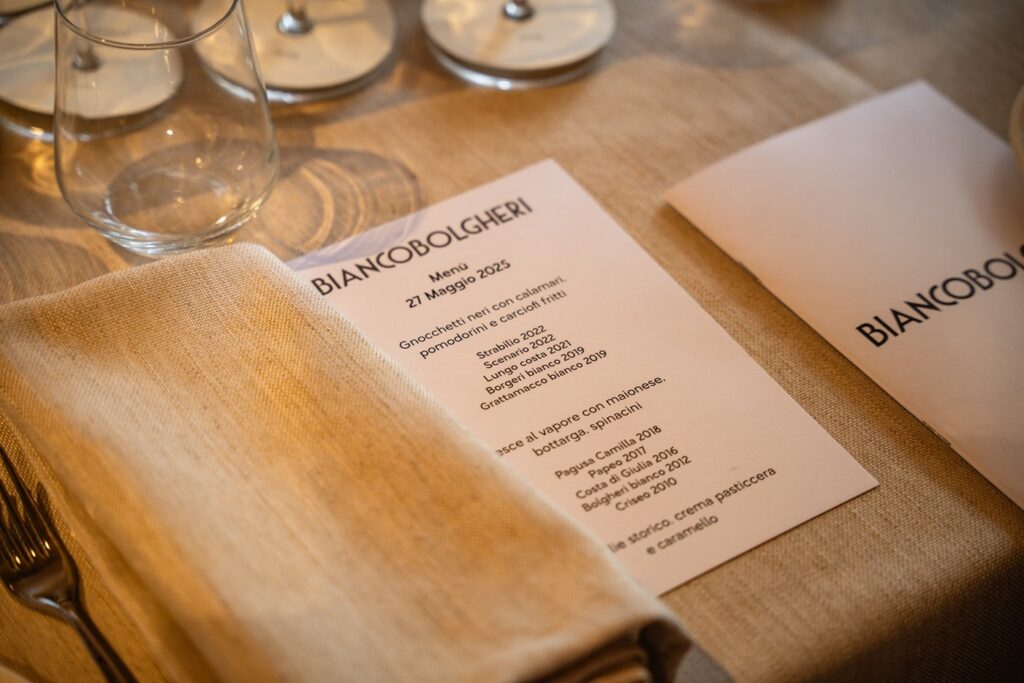
The success of red wines overwhelmed everything else, with the 1994 transformation of the DOC Disciplinary and viticultural zoning studies. The white production took a back seat. However, the disciplinary change also invested this type, with the opening to international varieties, such as Sauvignon blanc, Chardonnay and others. Meanwhile, Trebbiano toscano was going to disappear in the vineyards, while Vermentino suffered a bit of a secondary role. From the late 1990s onward, however, more and more producers, including us, wanted to focus on Vermentino as a local variety. Today it is now the most represented variety, although there is no shortage of other interesting grape varieties.
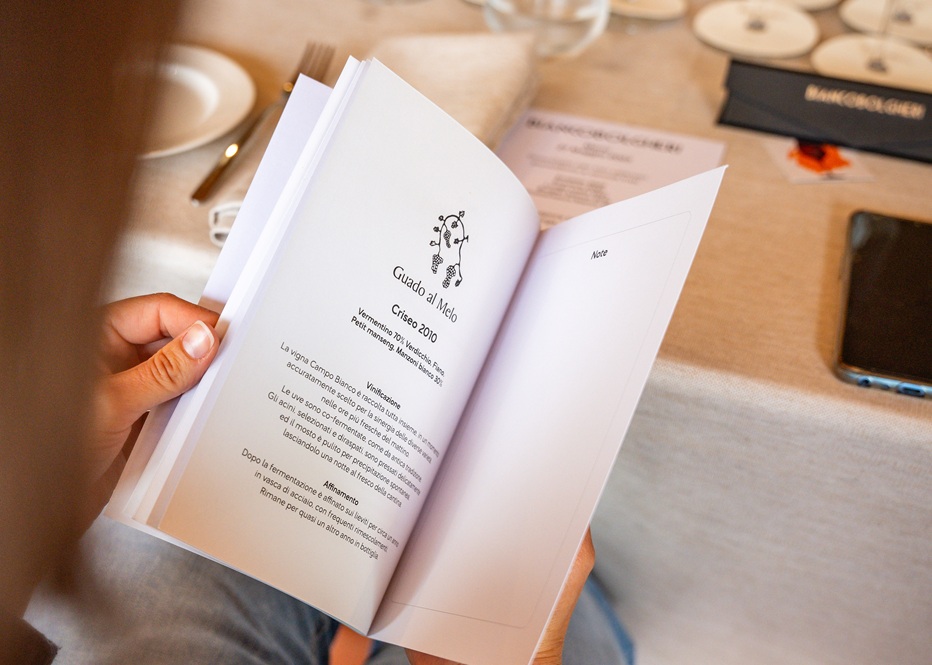
In particular, Michele and I, since our arrival in the late 1990s, with Attilio’s advice, wanted to enhance even more this type, then limited to a production that was considered minor, made only of young wines. In particular, we wanted to produce a great aging wine, capable of evolving over time. The idea was to combine Vermentino with other varieties, suited to the terroir and suitable for aging, united in the unique and ancient synergy of the field blend. This synergy is expressed in the co-fermentation of the varieties, which allows the development of an organoleptic profile different from the classic cellar blend, after harvesting them at a time designed for their perfect balance. Each variety plays an important role and they all dialogue with each other..
So we planted in the winter of 1998-1999 our Campo Bianco vineyard, with a predominance of the local Vermentino (about 70 percent). The rest is composed of a mix of varieties, Verdicchio, Fianco, Manzoni Bianco and Petit Manseng. Why the latter French variety? This one is found in the area of the French Atlantic Pyrenees, the Jurançon, where it originates great aging wines. Our interest stemmed from the fact that genetic studies have shown it to be related to Vermentino. The harvested grapes are selected, destemmed and gently pressed together, the must is cleaned by spontaneous cool decantation, and then co-fermentation follows. At the end, the wine is left to age on fine lees, with frequent stirring, for just under a year. Finally, it rests for almost another year in the bottle. Thus was born Criseo, initially called Guado al Melo Bianco.
Criseo was a later addition, to better connote it, with this evocative word (it means “made of gold”). The label depicts two dancing satyrs, holding a wine cup and a rattle instrument. They are not there by chance, they remind us of a beautiful Etruscan-Roman myth. This tells that the god Bacchus gave humanity three gifts to console us from the worries of life: wine (of course), music and dance. Here all three are depicted.
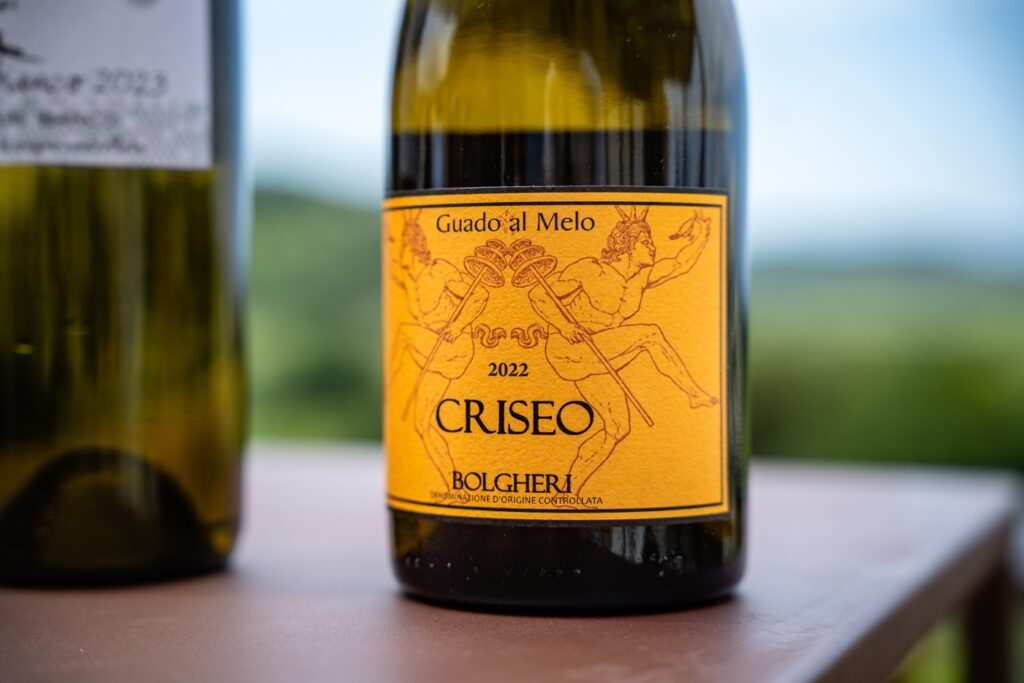
The first few years were not easy and there were several experiments, also necessary to find the ideal harvest time. They also helped us to fully understand the complex interactions of co-fermentation. We even went back on some aspects. For example, at the beginning we also had a little Viognier in the vineyard, but we preferred to remove it (we overgrafted it) because it was too covering and difficult to integrate into the “team”, with its intense aromas. Similarly, we fermented for the first two years and aged 15% of the must in non-new barrels. Instead, we preferred to go more and more by subtraction, given that we are in a territory that already gives great richness. Better not to overdo it, to maintain an excellent balance between intensity and finesse.
However, let’s not forget our colleagues, who participated with their wines in the tasting, who together with us enhance the Bianco della Denominazione: Giorgio Meletti Cavallari, Grattamacco, Caccia al Piano, Campo alle Comete, Argentiera, Terre del Marchesato, Poggio al Tesoro, Donna Olimpia and Michele Satta.
